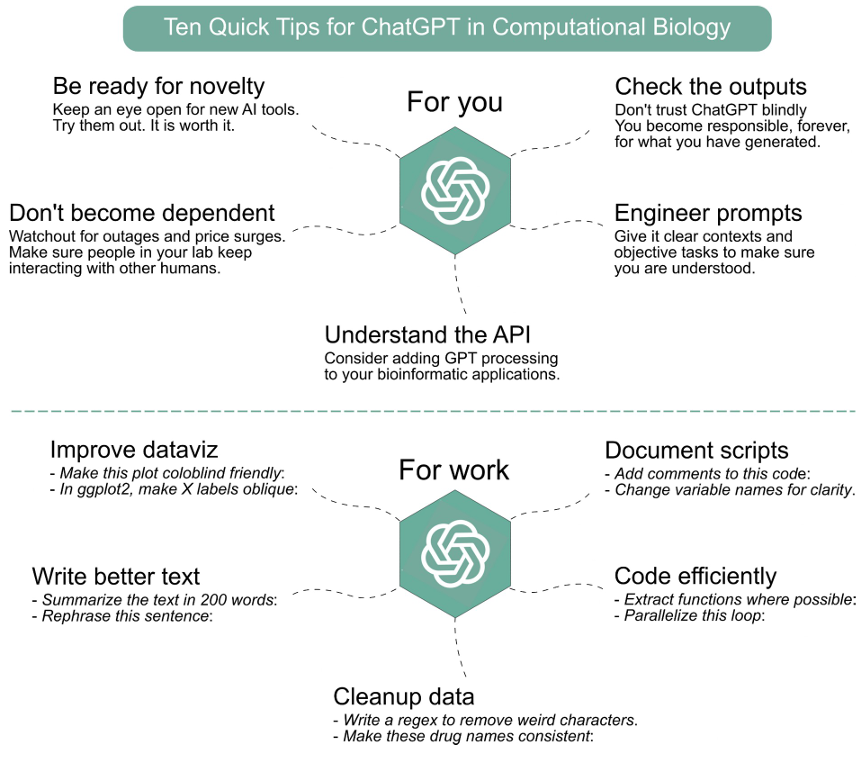Abstract:
The rise of advanced chatbots, such as ChatGPT, has stirred excitement and curiosity in the scientific community. Powered by large language models (LLMs) GPT-3.5 and GPT-4, ChatGPT is a General Purpose Technology with the potential to impact the job market and research endeavors in numerous fields [1]. Although similar models have been fine-tuned for biology-specific projects, including text-based analysis and biological sequence decoding [2,3], ChatGPT provides a natural interface for bioinformaticians to begin using LLMs in their activities. This tool is already accelerating various activities undertaken by computational biologists, ranging from data cleaning to interpretating results and publishing. However, with great power comes great responsibility. As scientists, we must harness the full potential of ChatGPT while adhering to ethical guidelines and avoiding pitfalls associated with the technology.
Figure:
